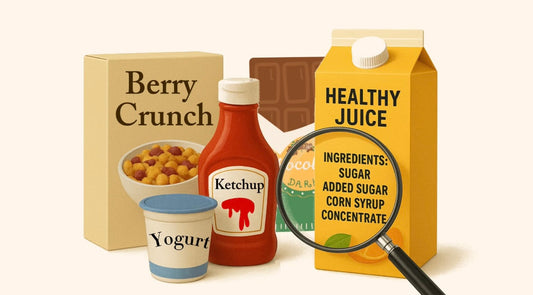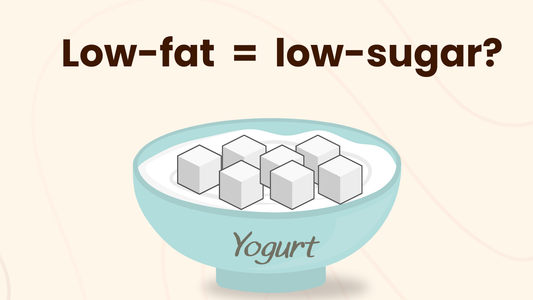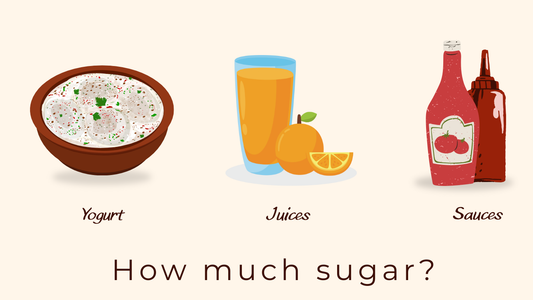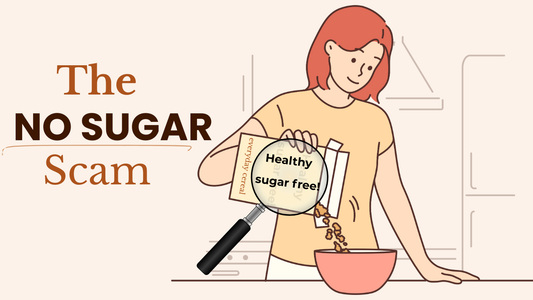The Sweetest Scam in a Can
Energy = health, right? At least that’s what ads tell you. Bright-colored cans, promises of wings, recovery, performance, hydration. Energy drinks and sodas have positioned themselves as fuel for busy lives.
But here’s the truth: for most of us, those bottles and cans aren’t giving energy. They’re giving sugar bombs.
👉 The “kick” you feel isn’t natural stamina. It’s a blood sugar spike - followed by a crash that leaves you hungrier, thirstier, and more tired.
What’s Really Inside Your Energy Drink
A standard 250 mL can of energy drink like Red Bull has about 27 g sugar - that’s 6-7 teaspoons. Some 500 mL cans cross 50 g sugar (12 teaspoons).
-
WHO’s recommended daily added sugar limit for adults: 25 g.
-
One can of energy drink = your whole day’s quota, in minutes.
And in India? Sting (PepsiCo’s energy drink) packs 17 g sugar in a 250 mL bottle. That’s one-third of your daily safe sugar in a few gulps.
👉 These aren’t “energy” drinks. They’re sodas with a new face.
The “Sports Drink” Myth
Sports drinks like Gatorade or electrolyte beverages are marketed as hydration saviors. Truth? Unless you’re running a marathon or cycling for hours, you don’t need the sugar they carry.
-
A 500 mL sports drink: ~30 g sugar - same as cola.
-
For regular gym sessions or office fatigue, that’s unnecessary.
👉 They’re sodas dressed in sporty clothes.
What Sugar in Energy Drinks Does to Your Body
-
The Spike → Within minutes, blood sugar shoots up. You feel alert.
-
The Insulin Flood → Body pumps insulin to deal with the overload.
-
The Crash → 1–2 hours later, blood sugar drops. You feel sluggish, crave more sugar.
-
The Long-Term Damage →
-
Repeated spikes = insulin resistance = diabetes.
-
Liver stores the excess as fat = fatty liver.
-
Sugar + caffeine = double stress on your heart.
👉 What feels like “energy” is really a sugar trap.
The Additives That Tag Along
Energy drinks aren’t just sugar.
-
Caffeine: Equivalent of 1–2 strong coffees per can. Too much = jitters, insomnia, high blood pressure.
-
Taurine & stimulants: Marketed as “performance boosters,” but little solid science behind them.
-
Artificial colors & flavors: Linked to hyperactivity in kids and gut irritation.
👉 It’s not fuel. It’s a chemical cocktail.
Zero-Calorie Sodas: Diet Coke, Coke Zero, Pepsi Black
What about the “0 Cal” drinks?
-
Diet Coke, Coke Zero, Pepsi Black → no sugar, no calories.
-
Sweetness comes from artificial sweeteners like aspartame, acesulfame-K.
-
They don’t raise blood sugar - but studies question long-term gut and metabolic effects.
So yes, they’re better than sugary colas in terms of calories. But they’re still not “clean.” They keep your brain hooked on sweetness without solving the root problem.
👉 The lesson: neither regular cola nor “zero” colas are real health drinks.
Why Athletes’ Drinks Are Different
Professional athletes sometimes use specialized sports formulations - balanced electrolytes, carbs, sometimes protein. That’s next-level sports nutrition designed for competition.
But what most of us drink from shelves in India - Sting, Red Bull, “sports” sodas - are not those. They’re everyday sugar-loaded beverages pretending to be energy.
👉 Don’t confuse what athletes actually use with what’s marketed to you in shops.
The Indian Teenager Trap
Energy drink consumption is exploding among Indian teens. Reasons?
-
Cool branding.
-
Peer pressure at gyms, cricket coaching, and colleges
-
Accessibility (cheap, everywhere).
But doctors warn: regular consumption = higher risks of obesity, diabetes, anxiety, and even heart rhythm issues.
This isn’t harmless “fun.” It’s health damage in slow motion.
The Alternatives That Actually Work
When you’re thirsty or tired, you don’t need a sugar bomb.
-
Water → the ultimate energy drink.
-
Coconut water → natural electrolytes, low sugar.
-
Homemade lemon water + pinch of salt → perfect for recovery.
-
Green tea or black coffee → natural caffeine, no sugar.
👉 Real energy doesn’t come in a neon-colored bottle.
Where EPRA Farms Stands
At EPRA Farms, we stand against hidden sugar traps.
-
Our monk fruit sweeteners contain zero sugar, zero calories, zero glycemic index.
-
No artificial sweeteners, no concentrates pretending to be healthy.
-
Clean, honest sweetness that diabetics, kids, and families can trust.
👉 If you want sweetness without the crash, choose monk fruit - the real future of clean energy.
FAQs
Q: Are energy drinks okay once in a while?
One can occasionally won’t kill you. But “once in a while” quickly turns into daily habits. That’s when it’s dangerous.
Q: Are sports drinks safe for gym-goers?
Not really. Unless you’re doing 2–3 hours of endurance training, water or coconut water is enough.
Q: Is Diet Coke or Pepsi Black safe?
They’re sugar-free, but contain artificial sweeteners. Better than sugar colas, but not the definition of “clean.”
Q: Can teenagers drink energy drinks?
Doctors strongly advise against it. Sugar + caffeine = double risk for young hearts.
Conclusion: Energy or Illusion?
One can of energy drink = your entire day’s sugar allowance.
What feels like “energy” is just a sugar spike, a caffeine buzz, and a marketing illusion. The crash is real, and the long-term effects are serious: diabetes, fatty liver, heart stress.
👉 Next time you see a flashy can, remember: you’re not buying energy. You’re buying sugar water in disguise.
Real energy comes from clean food, real hydration, and honest sweetness.





